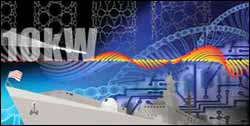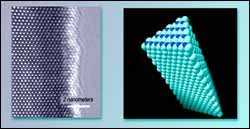This topic covers issues related to energy generation, conversion, transportation and consumption and how the industry is addressing the challenge of energy efficiency in general.
innovations-report provides in-depth and informative reports and articles on subjects ranging from wind energy, fuel cell technology, solar energy, geothermal energy, petroleum, gas, nuclear engineering, alternative energy and energy efficiency to fusion, hydrogen and superconductor technologies.

The Free-Electron Laser (FEL), supported by the Office of Naval Research and located at the U.S. Department of Energy’s Thomas Jefferson National Accelerator Facility, achieved 10 kilowatts of infrared laser light in late July, making it the most powerful tunable laser in the world. The recently upgraded laser’s new capabilities will enhance defense and manufacturing technologies, and support advanced studies of chemistry, physics, biology, and more.
“No other laser can provide the same be

A significant breakthrough in the development of the highly prized semiconductor gallium nitride as a building block for nanotechnology has been achieved by a team of scientists with the U.S. Department of Energy’s Lawrence Berkeley National Laboratory (Berkeley Lab) and the University of California at Berkeley.
For the first time ever, the researchers have been able control the direction in which a gallium nitride nanowire grows. Growth direction is critical to determining the

Crude oil imported to the United States costs more than $100 billion per year. As these reserves become depleted, synthetic alternatives may provide the best opportunities to displace these imports with indigenous products, including ethanol from corn, bio-diesel from vegetable oils, and oil from coal. However, it has been difficult to bring this new alternative fuel technology to the United States. A new study by a University of Missouri-Columbia researcher found that by changing existing roadbloc

Background noise that interferes with cellphone conversations could be a thing of the past thanks to a dual microphone system developed at the University of Toronto.
“In typical environments there is background noise and reverberations that make it hard to carry on a cellphone conversation,” says lead researcher Professor Parham Aarabi of U of T’s Edward S. Rogers Sr. Department of Electrical and Computer Engineering. “This system employs two microphones that, just like the two human ears,

A research team at Rensselaer Polytechnic Institute has created a new type of reflector that has dramatically improved LED (light-emitting diodes) luminance. The National Science Foundation (NSF) recently awarded the research team a three-year, $210,000 grant to move the patented omni-directional reflector to market.
“We have developed an omni-directional reflector (ODR) for LEDs that will accelerate the replacement of conventional lighting used for a multitude of applications, such as lig

James Bond-style technologies such as cell phones the size of earpieces and invisible sensors sprinkled about to detect toxins are closer to reality. University of Michigan researchers have figured out how to build wireless systems even smaller while still retaining range and power efficiency.
One obstacle to further shrink small wireless devices has been trying to fit all the components onto one chip but U-M researchers have built a tiny silicon-compatible antenna and frequency resonator